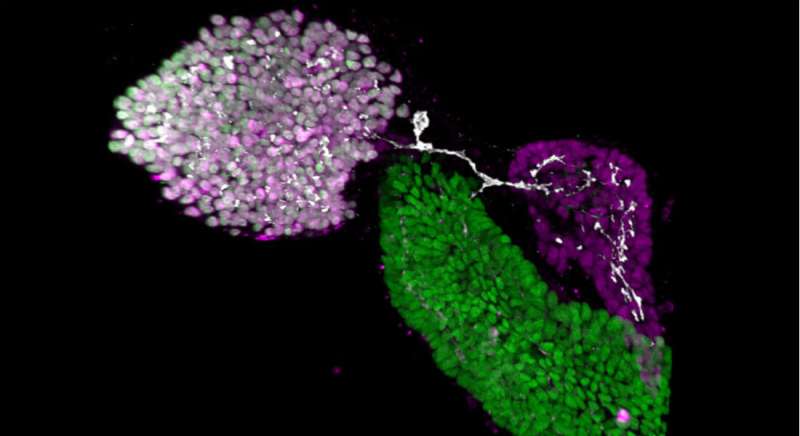Researchers map the formation of ducts connecting digestive organs in zebrafish

A specialised system of ducts transports bile and enzymes from the liver and pancreas to the intestine. In a new study, researchers from the University of Copenhagen have shown how this ductal system is formed. The new knowledge can help understanding how congenital diseases in that part of the body arise.
The body's liver, gallbladder and pancreas are connected by a specialised system of ducts, the so-called hepatopancreatic ductal system, that are leading to the intestine. Bile, digestive enzymes and other secretions flow through the ducts, which are therefore essential for enabling the digestion of food and the absorption of nutrients.
Now, researchers from the University of Copenhagen have investigated how this ductal system forms. The results have been published in the scientific journal Nature Communications.
The new findings may help to better understand rare diseases in the ductal system, such as biliary atresia. This is a disease in children where the ductal network is not properly developed, which can in some cases lead to severe liver damage.
"We know very little about diseases such as biliary atresia, where the ducts are blocked or completely absent. In order to understand how and why these diseases occur, it is important to find out how the entire ductal system forms during development," says Associate Professor and co-author of the study Elke Ober, Novo Nordisk Foundation Center for Stem Cell Biology (DanStem).
"In the study, we show that the ductal system is formed in a multi-step process, with different cell rearrangement and remodelling phases taking place until the ducts are open and fully developed. We have also found an important group of genes that control part of this process," says co-author and postdoc Ilcim Thestrup, who performed her Ph.D. thesis at DanStem.
The researchers have characterised the formation of the ductal system in zebrafish. The system is formed during embryonic stages. In humans, this takes several weeks, while in zebrafish the ductal system develops in about 48 hours.
Zebrafish resemble humans in many ways: Organ systems, functional cell types and signals controlling developmental processes are highly similar. This together with the fast embryonic development, are the reason why Elke Ober's research group chose to use zebrafish for this study.
In addition to experiments with zebrafish, the researchers examined human tissue samples to investigate if the group of genes, which they found in zebrafish, is also expressed in humans.
"We found a group of genes called EphB and EphrinB in the zebrafish, which instruct part of the development of the ductal system. We have shown that this group is also expressed in humans. This indicates that these genes may play the same or a similar role in the formation of these ducts in humans and if misregulated, they may potentially cause ductal diseases," says Elke Ober.
More information: M. Ilcim Thestrup et al, A morphogenetic EphB/EphrinB code controls hepatopancreatic duct formation, Nature Communications (2019). DOI: 10.1038/s41467-019-13149-7
Journal information: Nature Communications
Provided by University of Copenhagen




















